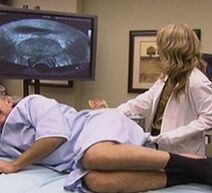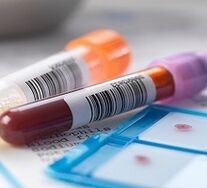How to determine prostatitis?This question is often asked doctors.According to doctors, it is possible to identify the inflammatory process in the prostate gland only with a comprehensive exam.
To make a diagnosis, an oral survey and a physical exam are carried out.In addition, the doctor prescribes instrumental and laboratory tests to the patient.According to the data obtained, the final diagnosis is made and the treatment tactics are selected.
Prostatitis can be eliminated from drugs or surgically.Priority is always drug therapy.Surgical interventions are prescribed only if abscesses, suppurations or other disease complications are developed.
What symptoms are inherent in prostatitis?
Prostatitis is a disease in which the iron of the prostate is inflamed.In this case, the body can increase in size and waves.As a result of the development of inflammatory processes, evergreen disorders appear, the quality of sperm decreases and develops sexual disorders.
How to identify prostatitis in men and distinguish it from other pathologies?Everything is quite simple, because this disease has characteristics characteristics.But, unfortunately, the disease can flow asymptomatically for a long time, therefore, it is often diagnosed in the posterior stages.
Then, the following signs are inherent in prostatitis:
- Dicizuric disorders.The ailment is capable of manifesting with frequent urination, intermittent urination and even urinary retention.At night, the patient is tormented by false urination.After emptying the bladder, an incomplete emptying sensation may occur.
- Pain.With prostatitis, the crotch hurts.The severity of the symptom during urination and during sexual contact intensifies.The pain can radiate in testicles, lower back and penis.
- Constipation.They are observed chronic in stagnant prostatitis.
- Violation of sexual function.In the reduction of the patient, power and libido, premature ejaculation occurs.It happens that a man, on the contrary, is difficult to finish during sex.The severity of orgasm with prostatitis is reduced.
- The appearance of blood or mucus in the urine.At the same time, severe itching in the urethra can occur during urination.These symptoms are observed with a bacterial form of ailment.
- Reduction of quantitative and qualitative sperm indicators.
- A feeling of nausea, chills, fever, general weakness, stain in the body.These characteristics are characteristic of acute bacterial prostatitis.
Important!When the previous signs appear, you must immediately communicate with a urologist.
How do the diagnosis be carried out?
Physical inspection and oral survey

Consider in more detail the question of how to identify prostatitis in men.First, the patient should consult a urologist.The doctor necessarily studies the patient's history and reveals if the man had chronic diseases of the genitourinary system before.
Initially, a physical examination of the prostate is carried out.The doctor inserts the finger into the patient's anus and verifies the iron to the touch.Distinguishing a healthy prostate from the patient is very simple.If the organ is inflamed, to the palpation, the doctor points out that the pancreas is swollen and has a heterogeneous structure.In principle, at this stage it is possible to diagnose prostatitis.
To obtain a precise clinical image, an oral survey is conducted.The urologist clarifies:
- What lifestyle the patient leads.
- How long have the symptoms of prostatitis appear?
- They were previously infectious/viral diseases.
- What is the concern for patient's work activity?
- If the patient transferred operations during which interventions were carried out to the pelvic organs.
Important!In addition, the doctor can perform a physical examination of the scrotum.The doctor draws attention to the size of the scrotum, its shape and consistency, as well as the mobility of the testicles.
Instrumental diagnosis

To identify prostatitis, instrumental diagnosis is necessarily necessary.The main diagnostic event is an ultrasound exam (ultrasound) of the prostate gland.
Ultrasound is carried out in several ways.The organ can be examined through the front abdominal wall, or using a specialized transrectal sensor.When using the sensor, you can get a more precise clinical image.
In addition to ultrasound, they can be named:
- Uroofloometry.
- MRI Gland of Prostata.
- CT Prostata.
Important!In case of suspicion of benign/malignant tumors, a biopsy of the glandular organ to the patient can be recommended.
Laboratory research

With the inflammation of the prostate, several tests must be taken.The laboratory diagnosis will include what exactly caused the pathogenic processes in the glandular organ, and if prostatitis has a bacterial/infectious nature in this case.
First, patients are prescribed a blood test in PSA, a specific prostate antigen.Analysis is needed to find out if there is a predisposition to DHC/cancer.Normally, the dog level must be striking by zero.
In addition to PSA Blood Analysis, recommended:
- Spermogram
- General blood analysis.
- Citological, general and bacteriological urine analysis.
- Taking a spot of the urethra.
- Study of the secretion of the pancreas.
- PCR research.
Important!According to the data obtained, the doctor can make the final diagnosis and, consequently, choose the treatment tactics.
How to treat prostatitis?

With how to detect the inflammation of the prostate, everything is extremely clear.Consider now the methods to treat prostatitis.Then, as noted above, there are two ways to solve the problem: undergo conservative or surgical treatment.
Surgical intervention is prescribed whether prostatitis is accompanied by complications such as DGPZ, abscess, urinary retention, Anuria, the appearance of stones in the glandular organ.Three main methods are used: prostatectomy, prostate resection and laser therapy.
Conservative treatment is more preferable and is used in the vast majority of cases.Provides:
- Making a healthy lifestyle.The patient must understand that bad habits will slow the recovery process.We will have to reject cigarettes and alcohol once and for all.
- Balanced diet.In urological diseases, it must definitely adhere to a diet.It is recommended to eliminate fatty dishes, semi-terminated products, fast food, fried foods.It also prohibits carbonated drinks, since they cause intestinal irritation, which is not useful for prostatitis.
- Visiting physiotherapeutic procedures.It can get rid of inflammatory processes through acupuncture, moxotherapy, electrophoresis, UVT, Thai massage.Prostate massage is also very useful.
- Avoid hypothermia, since it is the main cause of stagnant prostatitis.
- Taking certain medications for prostatitis.Antibiotics, bioregulatory peptides, alpha-1-adrenal ships, NSAIDs, antispasmodics and phytopreparaciones are prescribed.
- Direct a complete sex life (if possible).If a man refrains from sex, then he can get prostatitis again after undergoing therapy.Sexual activity with inflammation of the pancreas will be useful.The main thing is to use barrier contraception.
In addition, patients can use popular treatment methods.But it should be remembered that they are nothing more than an addition.With the inflammation of the pancreas, a decoction of Aspen, Honey Down, Microclines with chamomile are useful.

























